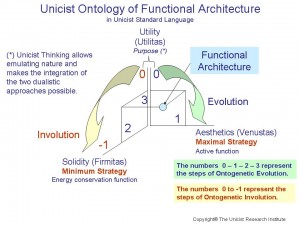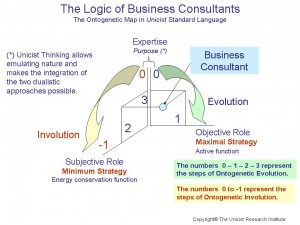Unicist Strategy based on Binary Actions: an Emulation of Nature
The 4th Industrial Revolution introduced a paradigm shift that allows empowering business adaptability and customer orientation that is an upgrade towards a superior level of value generation strategy. The 4IR is the revolution of functionality, which is based on the concepts that underlie business functions and the use of binary actions.
The discovery of the triadic ontogenetic intelligence of nature that regulates the evolution of living beings, made by Peter Belohlavek at The Unicist Research Institute, allowed understanding the structure of evolution, which is driven by binary actions, which are two synchronized actions that have been defined as maximal strategies to grow and minimum strategies to ensure survival. This functionality also applies to artificial adaptive systems.
The functionality of adaptive systems is driven by binary actions, which include objects and catalysts. Therefore, the development of strategies in adaptive environments requires building synchronized binary actions to influence each adaptive function of an environment.
The strategy building process requires defining the ontogenetic maps that describe the fundamentals of the functions involved, defining what is possible to be achieved, designing the maximal and minimum strategies, and developing the synchronized unicist binary actions (UBAs) to ensure the generation of results.
Unicist Press Committee
NOTE: The Unicist Research Institute (TURI) is a world leader in its segment. Since 1976, it has been specialized in complexity sciences applied to the research on the roots of evolution and its application to social, institutional, business and individual evolution.














